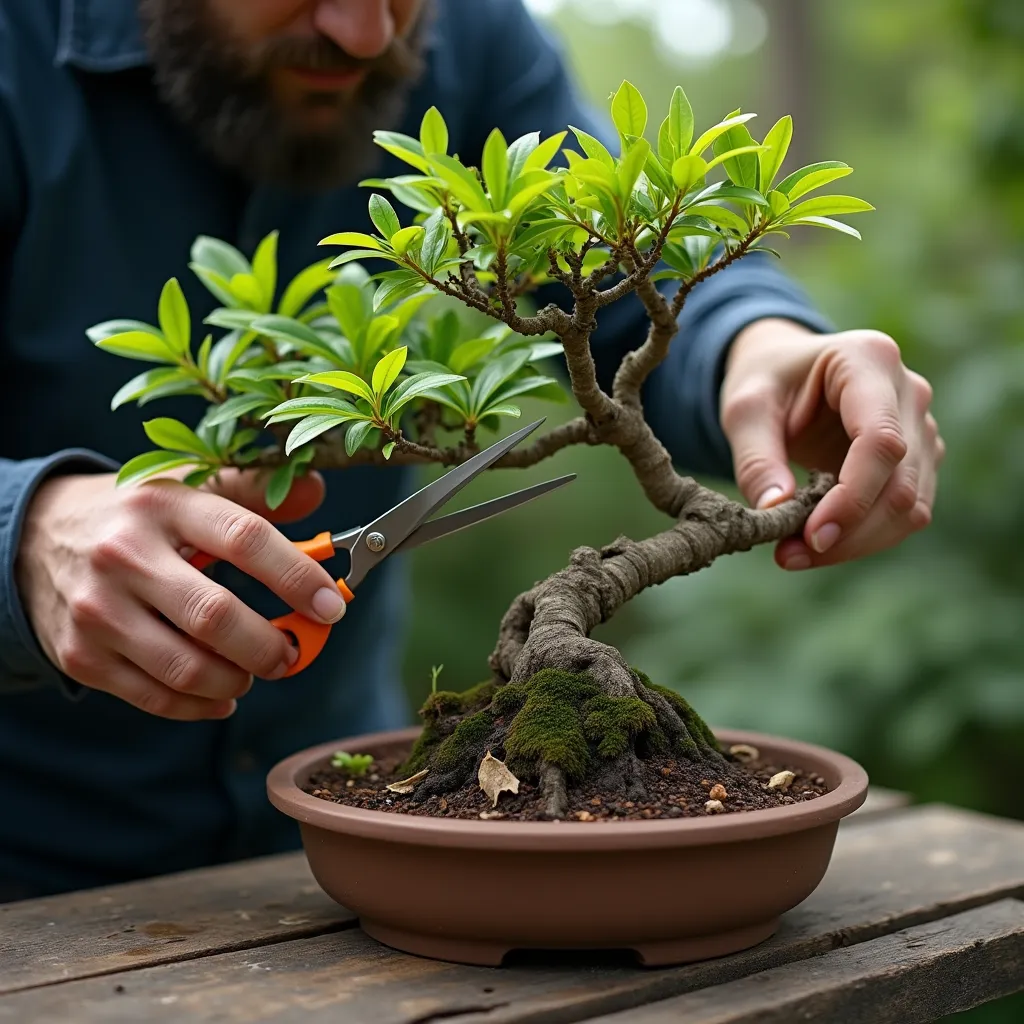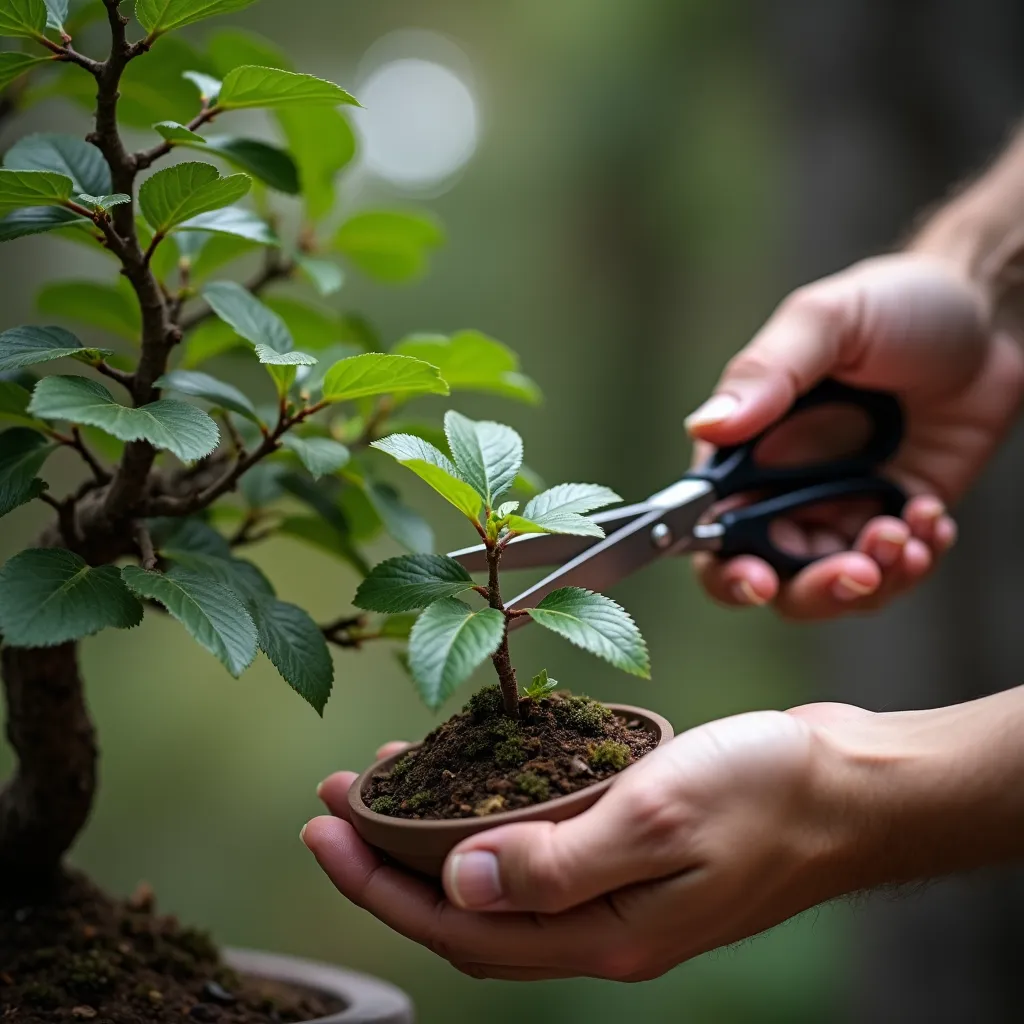How to Successfully Grow a Bonsai Tree from a Cutting: A Step-by-Step Guide
Growing a bonsai tree from a cutting is an exciting and rewarding process that allows you to create a miniature tree with unique characteristics. This method is often easier than growing from seed and can be particularly successful with certain species. In this comprehensive guide, we'll walk you through the steps of creating a bonsai from a cutting, including how to select and prepare your cutting, the use of rooting hormones, and the essential aftercare required for successful growth.
We'll cover everything from choosing the right time of year for taking cuttings to setting up an ideal environment for root development. Whether you're a beginner or an experienced bonsai enthusiast, this guide will provide you with valuable insights and techniques to successfully grow your own bonsai tree from a cutting.
TOC
- Selecting the Right Cutting
- Preparing Your Cutting
- Using Rooting Hormones
- Planting Your Cutting
- Providing Optimal Growing Conditions
- Aftercare and Monitoring
- Bonsai-Specific Techniques
- FAQ
- Conclusion
Selecting the Right Cutting
When it comes to growing a bonsai from a cutting, choosing the right piece of the plant is crucial for success. Here are some key points to consider:
- Choose a long extension: Aim for a cutting that's about eight inches long. Longer cuttings have more stored energy and a better chance of rooting successfully.
- Avoid short or thin cuttings: These have less stored nutrition and are less likely to thrive.
- Consider the species: Some plants, like Satsuki Azaleas, boxwood, and hollies, are easier to grow from cuttings than others, such as pines.
For deciduous trees, it's best to take the cutting just ahead of a node where you've removed some branches. Nodes are often good spots for root development. Remember, the roots will grow from various points along the cutting, not just from the cut end.
Preparing Your Cutting
Once you've selected your cutting, proper preparation is key to ensure successful rooting. Follow these steps:
- Remove lower branches: Cut off the bottom branches of your cutting.
- Leave some foliage: Keep some leaves or needles at the top of the cutting. These will help with photosynthesis and energy production.
- Make a clean cut: Use sharp, clean pruning shears to make a straight cut at the bottom of your cutting.
It's important to note that you don't need to worry too much about the angle of the cut at the bottom. The roots will grow from various points along the cutting, not just from the cut end.
Using Rooting Hormones
Rooting hormones can significantly increase your chances of success when growing bonsai from cuttings. Here's how to use them effectively:
- Choose your hormone: You can use liquid, powder, or gel rooting hormones. Each has its advantages, so choose based on your preference and availability.
- Prepare the hormone: For liquid hormones, create a 1:10 dilution with water.
- Apply the hormone: Dip the bottom portion of your cutting into the hormone solution for about 5-10 seconds.
- Allow to dry: Let the cutting dry for a few minutes before planting.
Remember, some plants are sensitive to hormone concentration and application time, so it's worth researching the specific needs of your chosen species.
Planting Your Cutting
The next step is to plant your prepared cutting. Here's how to do it:
- Choose a deep pot: Unlike seeds, cuttings need a deeper container to accommodate their length.
- Use appropriate soil: A well-draining, nutrient-rich soil mix is ideal for cuttings.
- Create a hole: Use a chopstick or similar tool to make a hole in the soil.
- Plant the cutting: Insert the cutting into the hole, aiming for about three inches deep.
- Consider the angle: You can plant the cutting straight or at an angle. Planting at an angle can help create an interesting base for your future bonsai.
- Water thoroughly: Ensure good contact between the soil and the cutting by watering well after planting.
Providing Optimal Growing Conditions
After planting, creating the right environment is crucial for your cutting to root and thrive. Here are the key factors to consider:
- Light: Place your cutting in a spot with good light, but out of direct wind.
- Moisture: Maintain consistent moisture using one of these methods:
- Hand misting
- Automatic misting system
- Electronic leaf system (for precise control)
- Temperature: Consider using a heating mat for bottom heat, especially for hardwood cuttings or during cooler months.
- Aim for around 70°F (21°C)
- Be aware that heating mats can dry out the soil faster, so monitor moisture levels closely
Aftercare and Monitoring
Once your cutting is planted and set up in its ideal environment, ongoing care is essential:
- Monitor for rooting: After a month or two, gently tug on the cutting. Resistance indicates root development.
- Gradual acclimation: Once rooting begins, slowly reduce misting to encourage stronger root growth.
- Patience is key: Don't expect significant above-ground growth in the first year as the plant focuses on root development.
- Transplanting: After about a year, you can transplant your rooted cutting into its own pot.
Bonsai-Specific Techniques
To create a more interesting bonsai from your cutting, consider these advanced techniques:
- Early wiring: Wire your cutting before the roots become too established to allow for gentle bends in the trunk.
- Creating movement: Instead of sticking a straight cutting, consider creating bends or curves before rooting to develop a more interesting trunk line from the start.
FAQ
-
Q: How long does it take for a cutting to root? A: It varies by species, but generally, you may see root development within 1-3 months under optimal conditions.
-
Q: Can I use any type of soil for my bonsai cutting? A: While opinions vary, it's best to use a well-draining, nutrient-rich soil mix specifically designed for bonsai or cuttings.
-
Q: Do I need to use rooting hormone? A: While not always necessary, rooting hormones can significantly increase your success rate, especially with harder-to-root species.
-
Q: How often should I mist my cuttings? A: This depends on environmental conditions. In general, aim to keep the cutting consistently moist but not waterlogged.
-
Q: When can I start training my bonsai after rooting a cutting? A: It's best to wait at least a year before beginning any significant training to allow for strong root development.
Conclusion
Growing a bonsai tree from a cutting is an accessible and rewarding way to start your bonsai journey or expand your collection. By following the steps outlined in this guide – from selecting the right cutting to providing optimal growing conditions and aftercare – you'll be well on your way to creating your own unique bonsai tree.
Remember that patience is key in this process. While it may take time to see significant growth, the satisfaction of nurturing a cutting into a beautiful bonsai is well worth the wait. With practice and experience, you'll develop a keen sense for this art form and be able to create stunning bonsai trees from simple cuttings.


